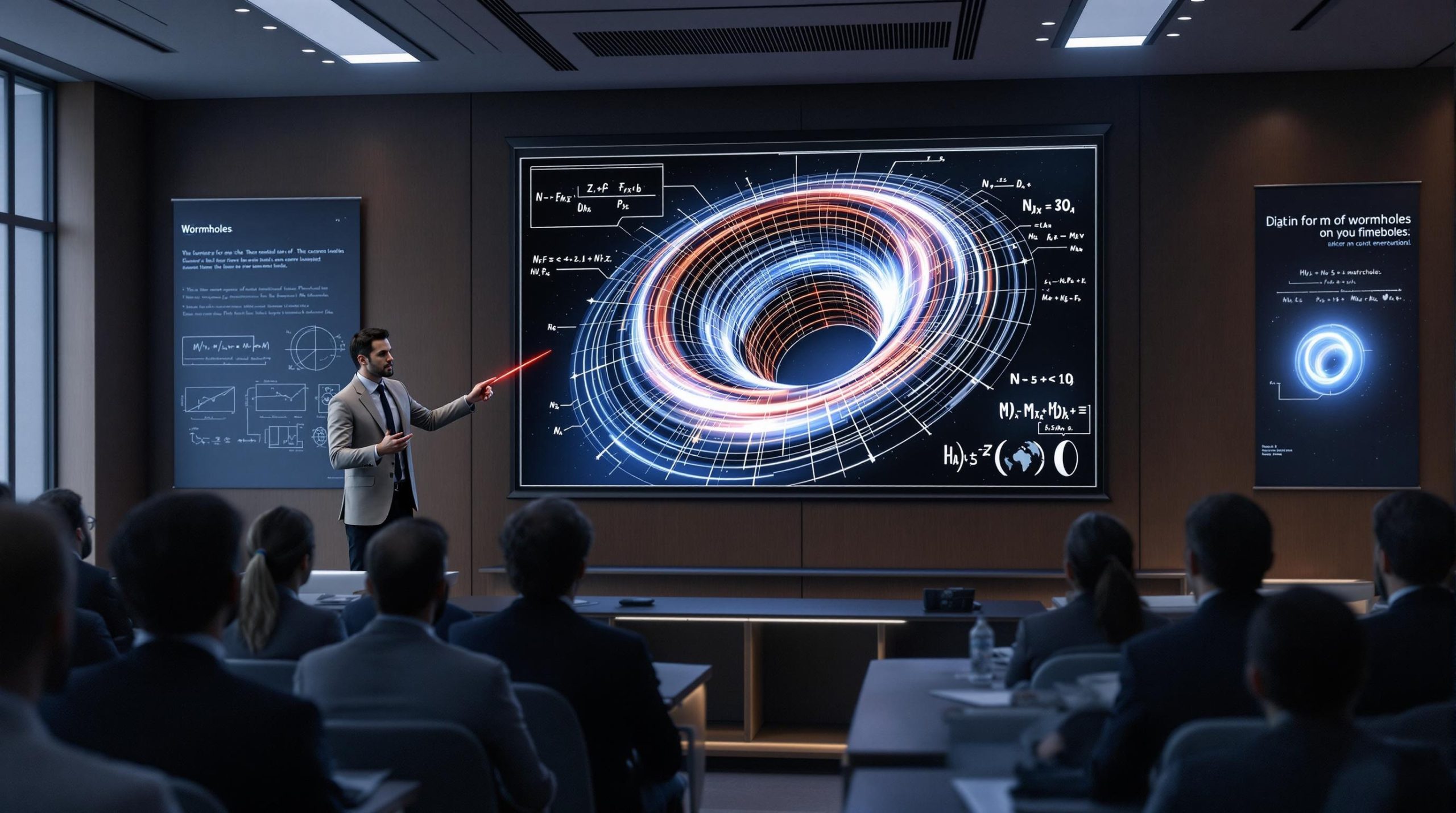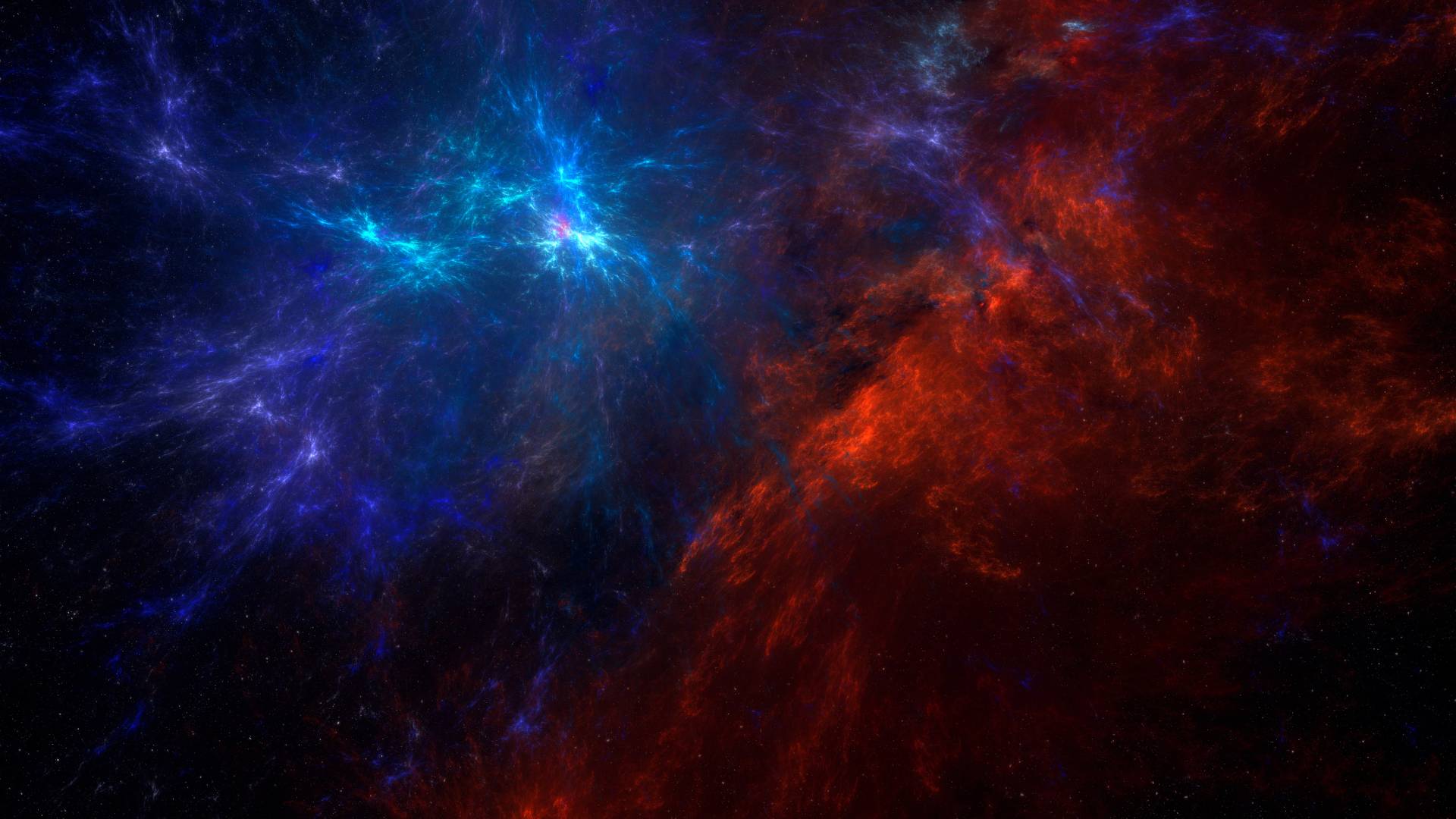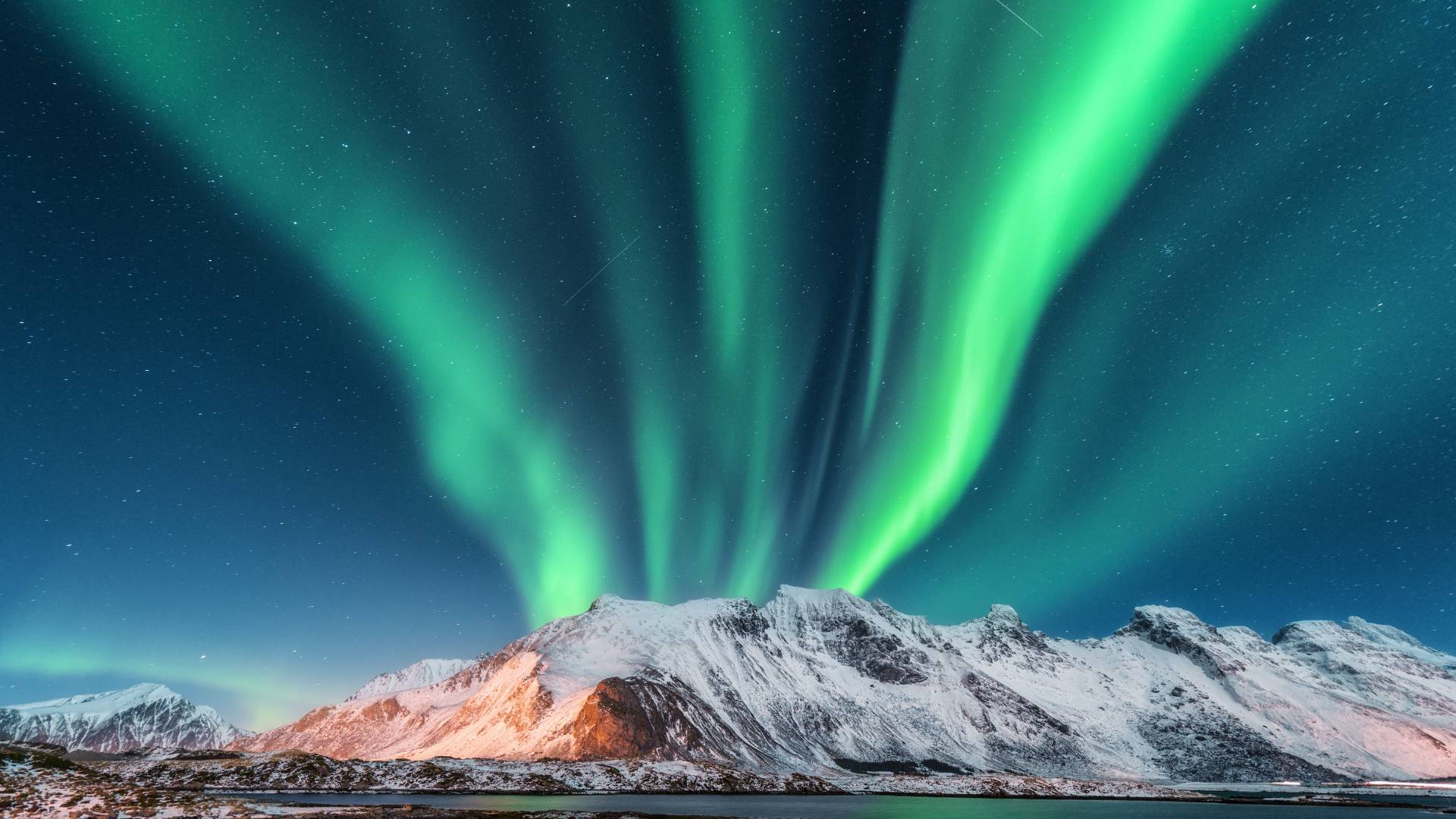The concept of wormholes has long fascinated scientists, science fiction writers, and dreamers alike. A wormhole, often imagined as a tunnel through space-time, could theoretically connect two distant points in the universe, making interstellar travel and even time travel possible. But are wormholes real? What does science actually say about their existence? Let’s delve into the intriguing world of space-time, physics, and the possibility of traversing these cosmic shortcuts. Stay with Spaceyv
What Are Wormholes?
Wormholes, formally known as Einstein-Rosen bridges, are solutions to Einstein’s field equations in general relativity. These hypothetical structures create a shortcut between two points in space-time, much like a tunnel cutting through a mountain rather than taking the longer route around it. The idea was first introduced in 1935 by physicists Albert Einstein and Nathan Rosen.
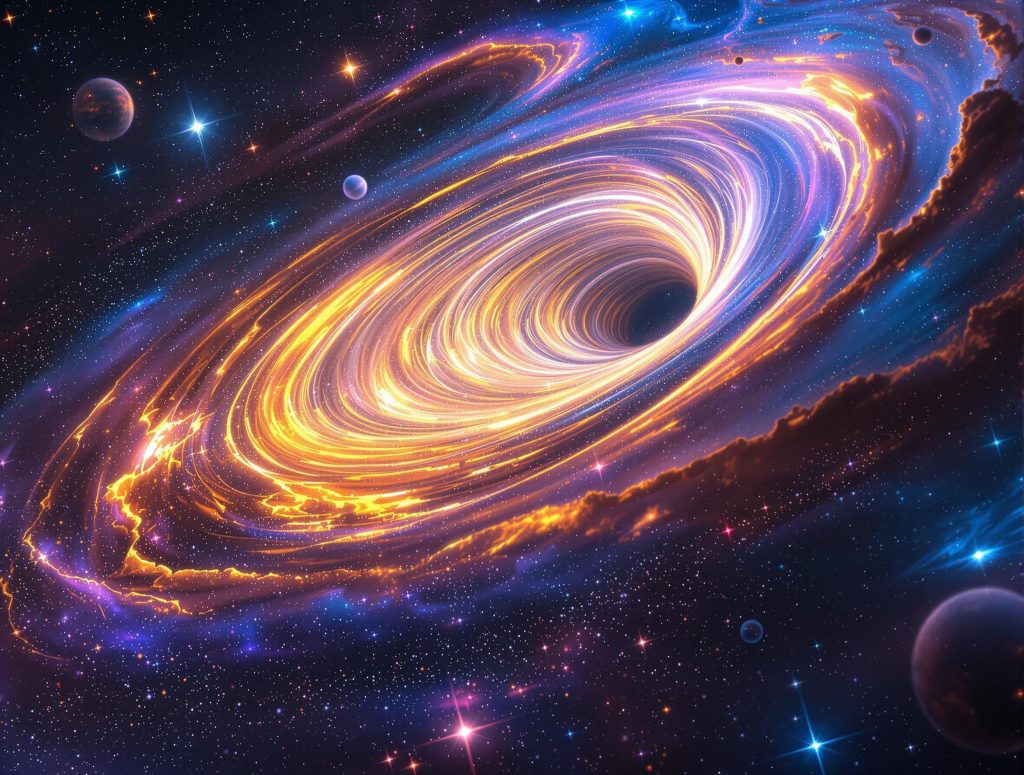
- Theoretical Passage in Space-Time: Wormholes are hypothetical structures in space-time that connect two distant points in the universe, acting as a shortcut.
- Einstein-Rosen Bridge: The concept is derived from Albert Einstein and Nathan Rosen’s work on the general theory of relativity, where they proposed “bridges” connecting two black holes.
- Two-Way Portal: In theory, a wormhole could allow travel in both directions between its two ends, potentially enabling interstellar or even intergalactic travel.
- Structure: A wormhole consists of an entrance, a throat, and an exit. The throat is the tube-like structure connecting the two openings.
- Exotic Matter Requirement: For a wormhole to stay open and stable, it would require “exotic matter” with negative energy density, a substance that has not yet been observed in the universe.
- Potential for Time Travel: Some theories suggest that wormholes might also allow for time travel, depending on the properties of their connection points.
- Speculative in Nature: Wormholes remain a theoretical concept as no physical evidence of their existence has been found so far.
- Relativity and Quantum Mechanics: The study of wormholes combines principles from Einstein’s theory of relativity and quantum mechanics, pushing the boundaries of our understanding of the universe.
- Challenges of Traversability: Even if wormholes exist, the immense gravitational forces and exotic matter requirements make them potentially dangerous or impossible to traverse.
- In Popular Culture: Wormholes are a frequent topic in science fiction, featured in movies, books, and TV shows as portals for faster-than-light travel or time manipulation.
A wormhole consists of two ends, or “mouths,” connected by a “throat.” If traversable, this structure could allow matter to travel from one point to another faster than light would take to travel through regular space. However, traversable wormholes remain speculative, as no empirical evidence has yet confirmed their existence.
Theoretical Foundations of Wormholes
Einstein’s Theory of General Relativity
Einstein’s theory of general relativity describes gravity as the curvature of space-time caused by mass and energy. Wormholes are one theoretical outcome of this curvature. In essence, they are a bending and folding of the fabric of space-time to create a tunnel-like structure.
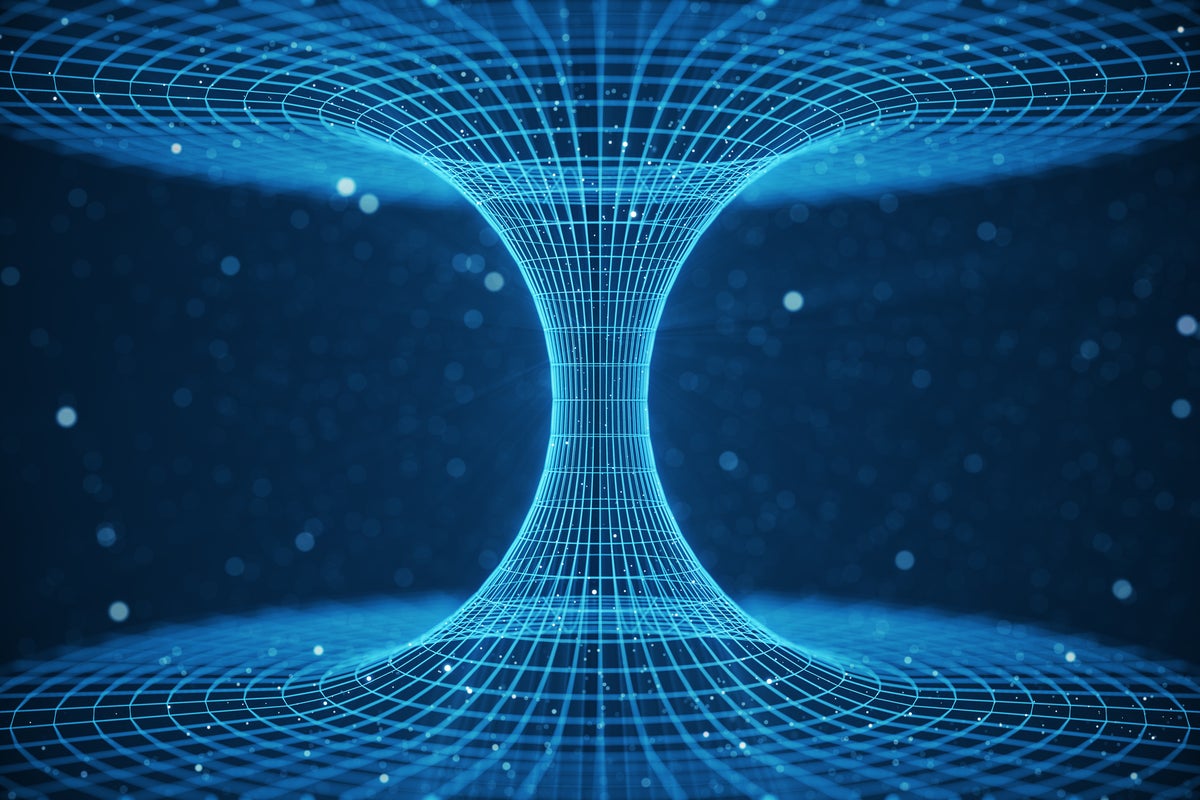
Kip Thorne and Traversable Wormholes
Physicist Kip Thorne, along with his colleagues, explored the concept of traversable wormholes in the 1980s. Their work was partly inspired by the need to explain time travel scenarios in science fiction. Thorne’s equations showed that traversable wormholes would require “exotic matter”—a form of matter with negative energy density—to keep the wormhole stable and open.
Challenges to the Existence of Wormholes
Exotic Matter
The primary obstacle to creating a traversable wormhole is the need for exotic matter. Negative energy density has been observed in small quantities through the Casimir effect, but scaling it up to the levels required for a wormhole is beyond our current technology and understanding.
Stability
Wormholes are inherently unstable. Without exotic matter, they would collapse almost instantly upon formation, trapping anything attempting to pass through. Some theoretical models suggest ways to stabilize a wormhole, but these remain speculative.
Paradoxes
If wormholes allowed for time travel, they could introduce causal paradoxes, such as the “grandfather paradox,” where an action taken in the past could prevent the traveler’s own existence. These paradoxes challenge our understanding of physics and causality.
Evidence and Observations
To date, no direct evidence for wormholes has been found. However, scientists are exploring indirect ways to detect them. For instance, deviations in the behavior of gravitational waves or unusual lensing effects around black holes could indicate the presence of a wormhole.
Astronomers are also studying supermassive black holes, such as the one at the center of the Milky Way (Sagittarius A*), to investigate whether they could harbor wormholes. While exciting, these observations remain inconclusive.
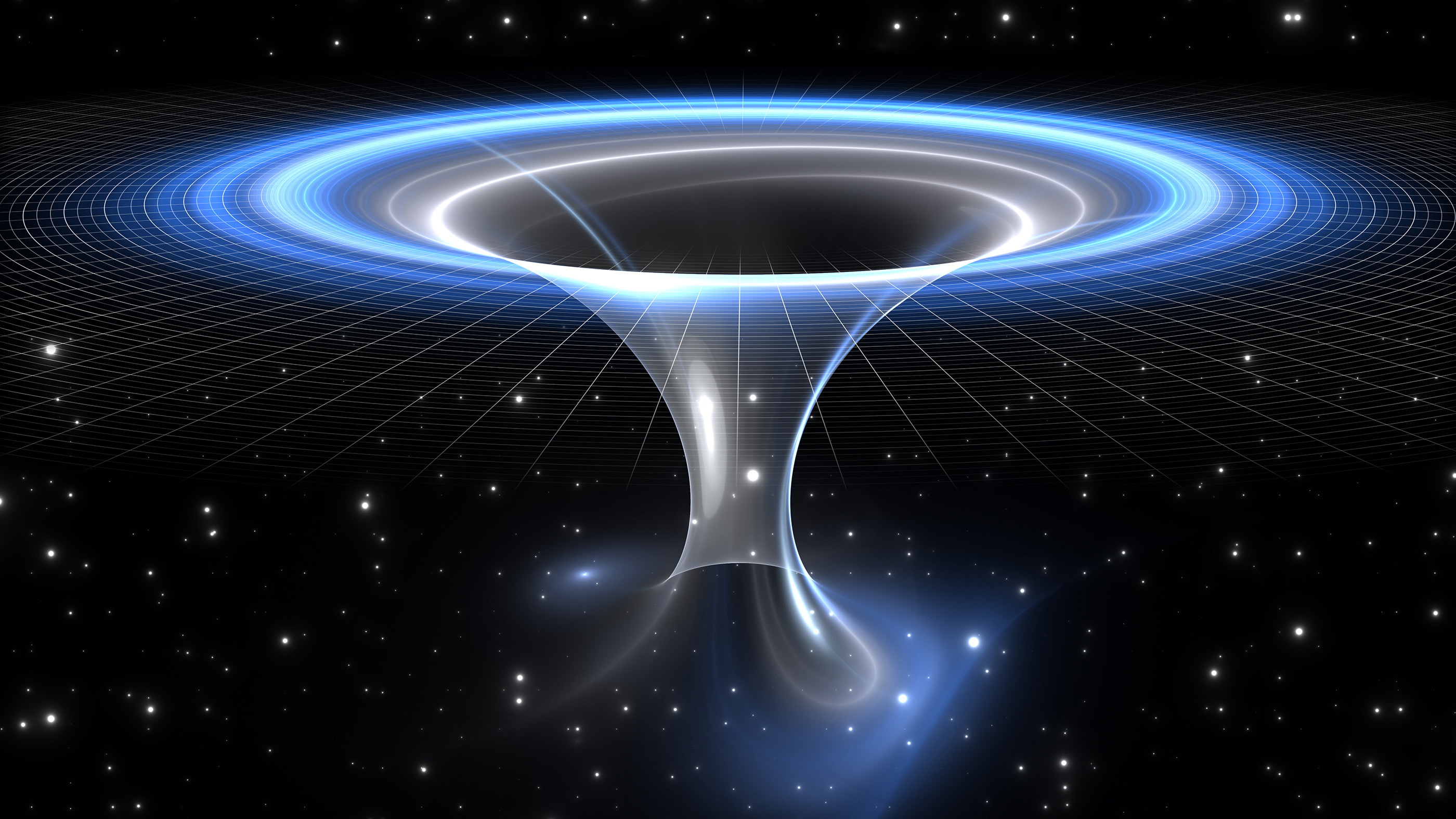
Wormholes in Science Fiction
Wormholes have captured the imagination of storytellers, appearing in iconic works like Interstellar, Star Trek, and Stargate. These portrayals often simplify or dramatize the science for narrative purposes, but they have also inspired scientists to think critically about the real-world possibilities of wormhole travel.
Future Prospects
While the existence of wormholes remains theoretical, advancements in physics and technology may one day provide answers. Quantum gravity, string theory, and other cutting-edge areas of research could shed light on whether wormholes are real and how they might be utilized.
Even if wormholes exist, making them traversable would require breakthroughs in understanding exotic matter, stabilizing space-time structures, and managing enormous energy demands. These challenges place wormholes firmly in the realm of speculative science for now.
Conclusion
Wormholes represent one of the most intriguing possibilities in theoretical physics. While they remain hypothetical, their study pushes the boundaries of our understanding of space, time, and the universe itself. Whether wormholes are real or simply a product of mathematical curiosity, they remind us of the vastness of the cosmos and the endless potential for discovery.
To learn more about space, science, and the mysteries of the universe, visit Spaceyv.com.
References
Einstein, A., & Rosen, N. (1935). “The Particle Problem in the General Theory of Relativity.”
Thorne, K. (1994). Black Holes and Time Warps: Einstein’s Outrageous Legacy.
Visser, M. (1995). Lorentzian Wormholes: From Einstein to Hawking.
NASA – Wormholes and Space-Time: https://www.nasa.gov
ScienceDirect – Exotic Matter and Wormholes: https://www.sciencedirect.com
ESA – Theoretical Physics and Space Exploration: https://www.esa.int

